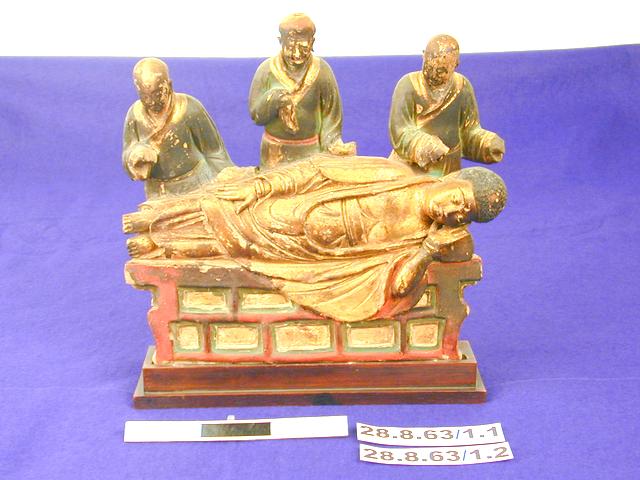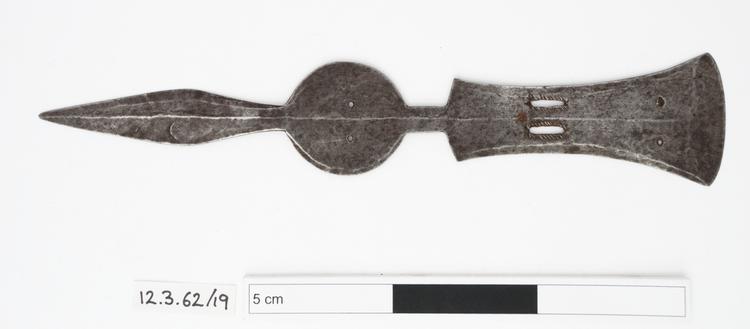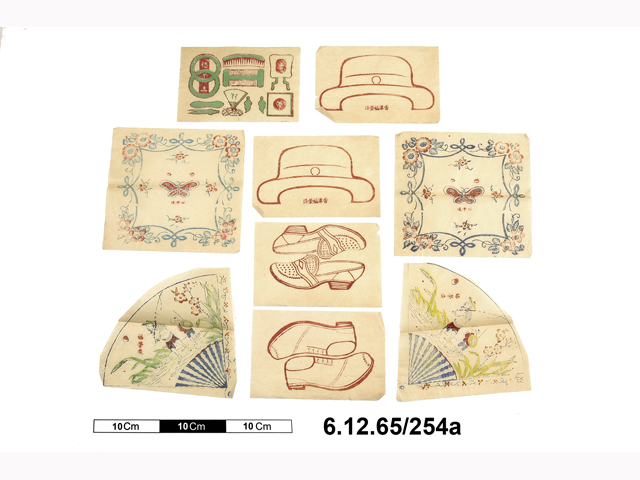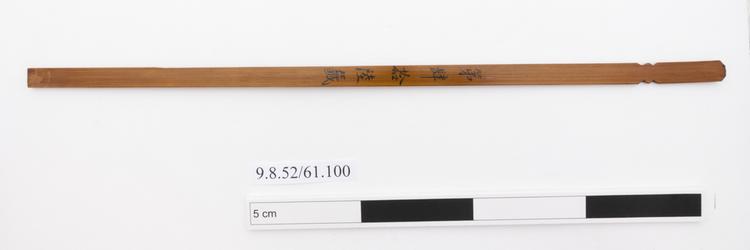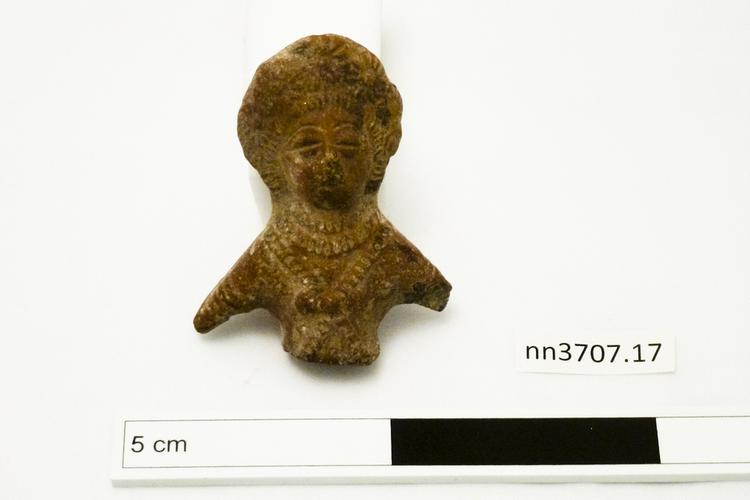
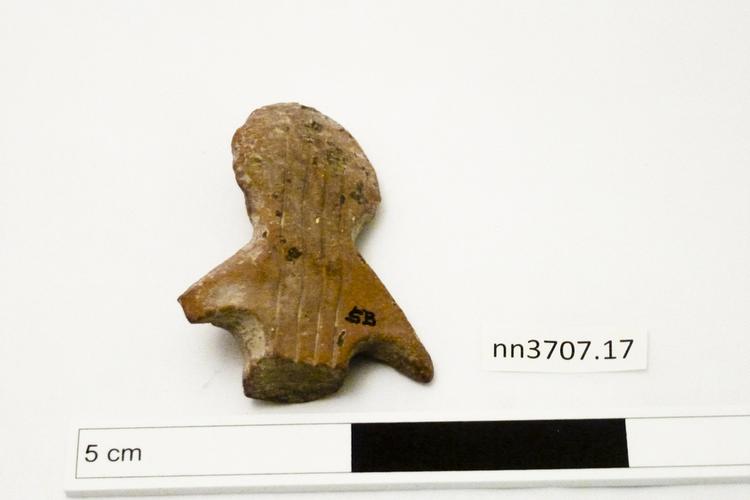
Head and upper torso of a female human figurine in red terracotta, complete down to just above the waist. Flat at the back, long plaits or tresses of hair are depicted with a set of four vertical engraved lines. The figure has short outstretched arms, small appliqué breasts, mouth, eyes and brows incised from the matrix. The arms are decorated with vertical lines probably depicting bracelets or armlets. The neck is decorated with a double necklace of clay strips incised with vertical lines and the front upper body bears a kind of cross belt from the shoulders to the abdomen (typical of the Sar Dheri type) in material similar to the necklace. The hair is adorned at the front with crown of flowers above what seems to be a row of tight curls around the face. This is a female deity of some kind, possibly a nature or fertility spirit. It is similar in many respects to the Sari Dheri type of figurine in general feminine demeanour and decoration and in its short outstretched arms.
Head and upper torso of a female human figurine in red terracotta, complete down to just above the waist. Flat at the back, long plaits or tresses of hair are depicted with a set of four vertical engraved lines. The figure has short outstretched arms, small appliqué breasts, mouth, eyes and brows incised from the matrix. The arms are decorated with vertical lines probably depicting bracelets or armlets. The neck is decorated with a double necklace of clay strips incised with vertical lines and the front upper body bears a kind of cross belt from the shoulders to the abdomen (typical of the Sar Dheri type) in material similar to the necklace. The hair is adorned at the front with crown of flowers above what seems to be a row of tight curls around the face. This is a female deity of some kind, possibly a nature or fertility spirit. It is similar in many respects to the Sari Dheri type of figurine in general feminine demeanour and decoration and in its short outstretched arms. Marked on the back with ‘SB’ (probably Sari Bahlol, Mardan District, Khyber-Pakhtunkhwa, Pakistan). Archaeological context: presumably unstratified and from a surface collection. circa 1st century BCE or CE. Given by Col D H Gordon (1952/3).



